New: Scalp Massager - A Tool for Grounding and Return

Among seasoned Rapé users, especially in circles where larger doses are shared, it is common for the receiver to be strongly tapped or scratched on the crown or back of the head for a short moment, to ease the initial shock and help the body reintegrate after the blow.
A Moment of Discovery
I recently came across a vendor offering these stainless-steel scalp massagers, sometimes called orgasmatrons, and was inspired to apply the device with a similar purpose. After serving a friend a strong dose of Rapé, I quietly placed and gently moved the massager over his head. His reaction was instant, a mix of surprise, laughter, relief and release, that felt both grounding and ecstatic.
The Steel Scalp Massager offers a gentle way to bring awareness home to the body. Its 12 flexible, round-tipped wires glide softly over and around the scalp, releasing tension and awakening circulation. The sensation is delicate yet powerful. A tingling calm that draws energy downward, clearing mental fog and easing overstimulation. While not part of any traditional Rapé ritual, I foresee that this contemporary method and tool could become quite popular for its benefits during the intensity and onset of the Rapé experience, helping the nervous system to relax and integrate. I decided to order one hundred units to offer for sale at Katukina, at a true bargain.
How To Apply
To use, apply it directly after the blow. Sit upright, breathe slowly, and move the massager from the crown downward in slow, steady strokes. The 12 rounded tips gently grip the scalp and glide over the skin, enough to awaken the nerves without pressure. When applied unexpectedly to the person who is served, the response can be profound. A sudden mix of surprise, release, and delight. The effect is immediate: a shift from inner intensity to embodied calm.
Apply only for a short moment following the immediate onset, then allow the recipient to remain in their own process.
You can find the Scalp Massager and detailed information here.
------------
Discover What’s New: Updated Terms, FAQs & Our Story
We’ve recently updated our Terms & Conditions, Frequently Asked Questions, and About Us section. These updates include clearer policies, useful new details, and direct links to relevant articles we’ve published. Our About Us page now offers deeper insight into how we began pioneering in this field over a decade ago, and how we’ve grown and specialised over the years.
We also encourage you to review our updated Privacy Policy for a full overview of how we handle your data.
Just scroll down to read our current offering—a living vision and sacred reflection—and explore assorted pages featuring links to our most recent publications and insights.
A Call to Remember
What follows is more than a prayer; it is a ceremonial vision. Part invocation, part mirror, it speaks not only to the individual, but to the collective memory of what has been forgotten—and what we are being quietly called to restore.

The Ceremony of Remembrance
In the heart of a sacred forest glade, a radiant Indigenous woman moves in a powerful, trance-like ceremony of healing. Before her, a round cloth is laid with sacred herbs, vibrant flowers, and ritual offerings. Wisps of incense smoke rise gently, carrying silent prayers to Pachamama, the great Earth Mother.
Crowned with feathers and dressed in flowing red, she moves barefoot upon the Earth. Her body sways with grace and purpose, as if guided by an unseen current. Her arms extend outward and downward, palms facing the earth. To comfort, to soothe, to channel.
Her hands hover above the figures at her feet. Humans trapped within their minds, gripped by the programming of a world that has forgotten its sacred origins. Their eyes are distant, but deep within them flickers a longing—a yearning for awe, for wonder, for the youthful spirit that once connected them to the living rhythm of life. They are not merely present; they are symbols of humanity’s current state.
Through her open hands, she draws the energy of Pachamama upward, and at the same time, pours that love and healing into the hearts of those around her. It is a gesture of offering, of service, of transmission. She becomes a bridge between earth and soul, between spirit and sorrow, performing a quiet miracle through presence alone.
At the height of her face, to her left, the Arara glides—vibrant and strong. To her right, the Hummingbird hovers in focused stillness. These winged beings are sacred guides and witnesses, symbols of transformation and spirit, guarding the ritual of reconnection.
With each movement, the woman enacts a ceremony of remembrance. She moves not just for herself, but for all those around her—for all of humanity. Her gesture speaks to the Earth, to the sky, to the unseen threads that bind us. It is an offering of return: back to the source, back to balance, back to Pachamama.
This dance is more than a vision. It is a mirror—and a call.
In a world racing forward, burdened by noise, expectation, and disconnection, our greatest challenge may be to pause, to untangle the knots of pressure and conditioning, and to remember what it means to simply be. To feel the earth beneath our feet, the breath within our lungs, and the sacredness that surrounds us.
For many, this return is but a faint echo—hard to hear amid the noise. But for those who have already begun the journey back to Pachamama, it is more than a path; it is a responsibility. A quiet invitation to be a light, a presence, a hand extended toward those still seated in forgetting.
Healing is not only individual; it is communal. The ceremony continues. The dance goes on. And we are all called to take our place within it.
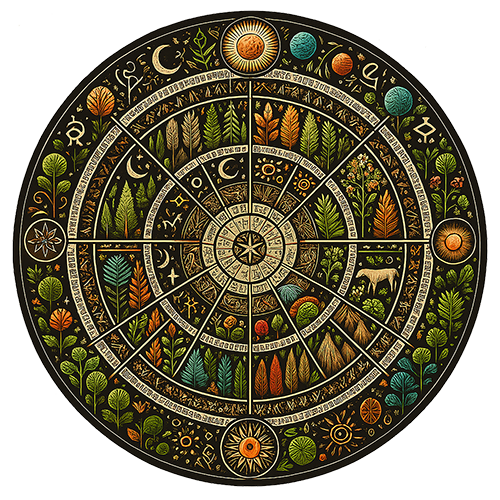
Explore the World of Tabaco and Rapé: Insights, Uses, and Techniques
Rapé is more than just a herbal snuff—it's a sacred tool rooted in indigenous wisdom and ceremony. Whether you're new to this plant medicine or deepening your practice, the resources below offer guidance on safety, intention, and the many ways Rapé can support emotional, energetic, and spiritual work. From foundational questions like What is Rapé? to practical how-to guides for making and refining your own blends, each article is here to support informed, respectful, and intentional use.
Browse the articles to learn more
Sacred Tabaco Varieties: Origins, Properties, and Traditional Uses
Tabaco has long held a central place in shamanic, ceremonial, and healing traditions throughout the Americas. Each variety carries its own energetic quality, strength, and cultural context. Whether used in Rapé, prayer, smoke rituals, or as an offering, Tabaco is considered a bridge between the human and spirit worlds. The articles below explore six key Tabacos, detailing their origins, characteristics, and how they are used both traditionally and today. This collection is designed to help you make informed, respectful choices about the Tabacos you work with.
Deepening the Practice: Rapé in Process Work and Ceremony
The following articles are not written to promote Rapé to new users, nor are they presented as medical advice or cure. They are intended to support experienced practitioners and facilitators in understanding the broader dimensions of Rapé use. Whether you're holding space in ceremony, guiding newcomers, or working through your own inner process, these writings offer perspectives that highlight Rapé’s deeper potential—emotional, energetic, and integrative. They aim to enrich how we relate to this sacred tool and the role it can play in conscious, intentional practice.
Explore the articles about Process Work and Ceremony
Indigenous Lineages and Sacred Knowledge
The strength and authenticity of traditional medicines—such as Rapé, Sananga, and sacred Tabaco—are rooted in the cultures that preserve and pass them on. Each tribe carries a unique cosmology, relationship with the forest, and set of rituals that give context and meaning to these plant allies. In this section, you’ll find introductions to various indigenous peoples who steward this ancestral wisdom. From the forests of Acre to the highlands of the Andes, each group brings its own voice, its own medicine, and its own way of honoring the sacred.
Explore their stories and traditions
Sacred Ashes – The Alchemy of Trees
In traditional Rapé preparation, ashes are not just a base—they are carriers of spirit. Made from the burned bark, wood, or roots of sacred trees, these ashes are chosen with intention for their energetic, healing, or grounding properties. Each type of ash has its own character: some are calming, others stimulating; some connect to the heart, others to the root. Indigenous tribes across the Amazon select and prepare these ashes according to lineage knowledge passed down for generations.
Learn more about the unique energies and traditional uses of each type
Sacred Botanicals and Natural Allies
A wide array of sacred botanicals have been revered across cultures for their unique spiritual, energetic, and healing qualities. These plants, resins, and roots are used in rituals, ceremonies, or personal practices to cleanse, protect, open perception, or connect more deeply with the self and nature. Whether burned, brewed, anointed, or held in prayer, each carries a specific vibration and story.
Explore the qualities and traditional uses of each sacred ally

| Rapé Discovery Collection Set of 10 Classics |

| Kuripe Brass Brass |
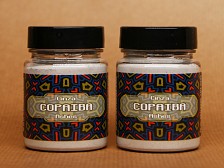
| Ashes Copaiba pot, 60 ml, 30 gr |

| Ashes Copaiba bottle, 25 ml, 14 gr |

| Ashes Copaiba bottle, 10 ml, 6 gr |

| Ashes Envira Ferro pot, 60 ml, 30 gr |

| Orchid Fever 3.0 bottle, 25 ml, 16 gr |
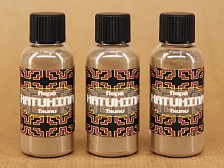
| Katukina Txunu bottle, 25 ml, 15 gr |
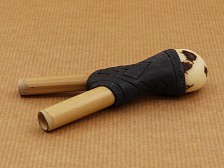
| Kuripe Resin Art Black with jarina |
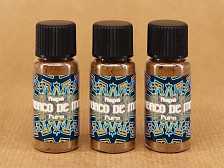
| Moi Powder bottle, 10 ml, 6 gr |
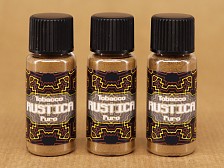
| Rustica Powder bottle, 10 ml, 4 gr |
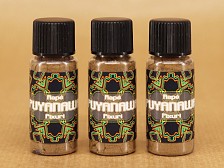
| Puyanawa Pixuri bottle, 10 ml, 7 gr |

| Katukina Menta sticker |

| Katukina Txunu sticker |

| Pineal Flush 9.0 sticker |

| Ashes Oak sticker |

| Shawadawa Kapayuba sticker |

| Kuntanawa Capim Santo sticker |